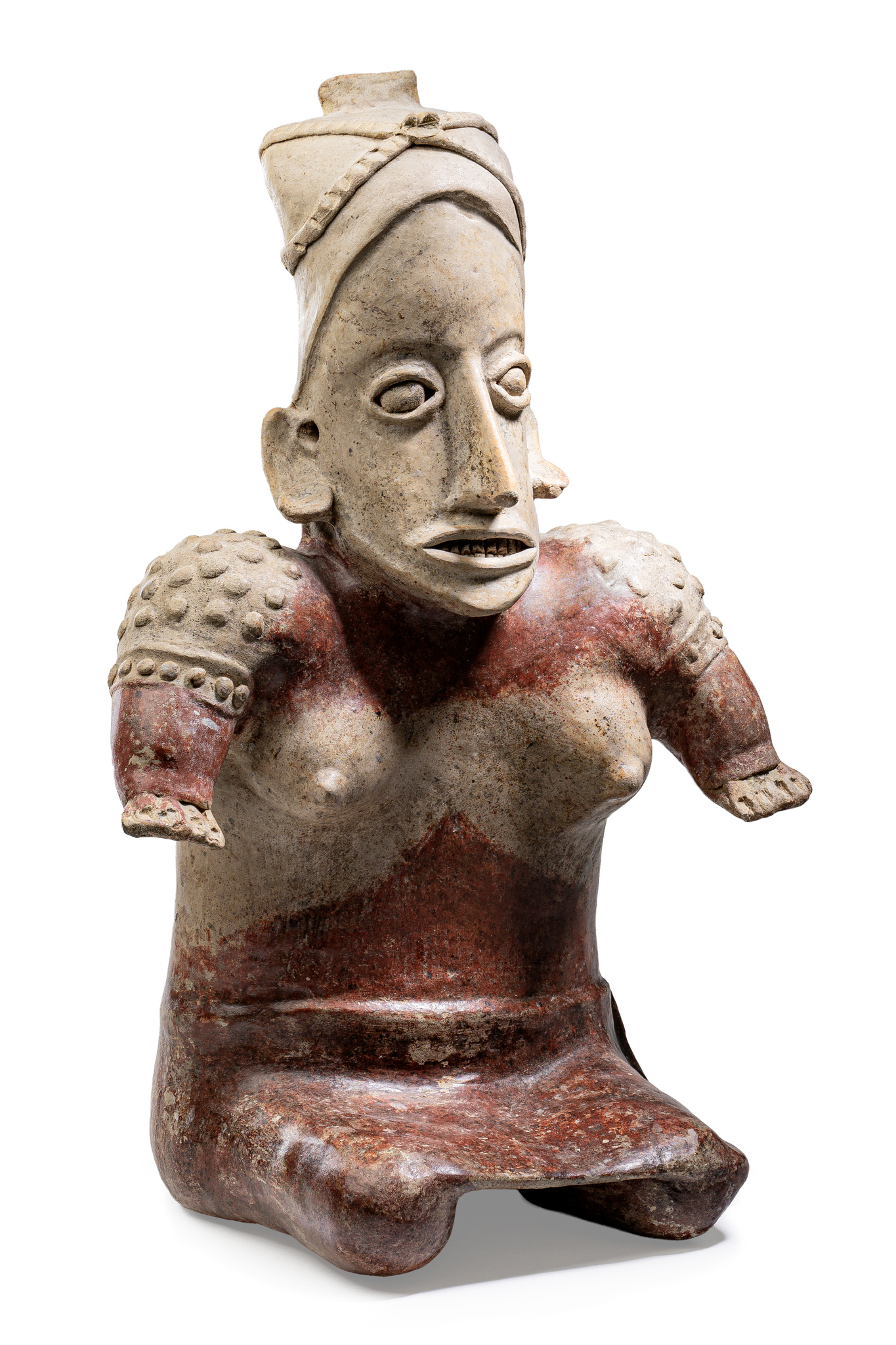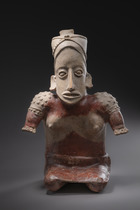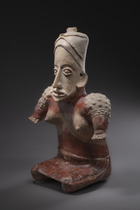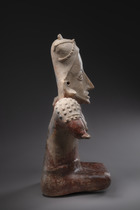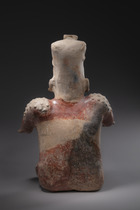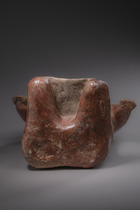Figure féminine, période protoclassique, env. 1er s. av. J.-C. – 3e s. apr. J.-C. · Mexique, Jalisco, Ameca · ID: 3052482
Jen-Ley, Texas-California, USA
Walter Knox, Scottsdale, Arizona, USA
A. & B. Schirmer, Berlin, Germany
Description
ceramic, dark red and cream white slip, rest.
The body proportions of the figure — the narrow, strongly elongated face, the broad, massive upper body with markedly shortened arms and legs (it is uncertain whether the figure is sitting or kneeling) — were not intended to depict deformities but rather followed stylistic conventions. She wears a tall headdress and ear ornaments. Characteristic are the knob-like decorations in the shoulder area, which are usually interpreted as ritual scarifications. All of these elements are likely signs of high rank.
This large, hollow-modeled female figure probably belonged to a group of similar ceramic sculptures that were once placed in a shaft tomb in Jalisco.
The shaft tombs of western Mexico consist of a vertical shaft, dug 3 to 20 meters deep into the often underlying volcanic tuff. The shaft opens into one or two (sometimes more) horizontal chambers. Several burials were found in each chamber, and there is evidence suggesting that the tombs were used over time by families or kinship groups. The considerable labour required to construct the shaft tombs, as well as the number and quality of the grave goods, indicate that these tombs were reserved exclusively for the elites of society.
L’objet Figure féminine, période protoclassique, env. 1er s. av. J.-C. – 3e s. apr. J.-C. numéro d’objet 3052482, a fait partie de la Vente aux enchères 105 le 15 novembre 2025, numéro de lot 51 et est actuellement disponible pour 2 500 € en Vente libre.
Vous trouverez d’autres Figures et autres types d’objets populaires sur nos pages thématiques associées.
Expertise
R. Kotalla, Thermoluminescence-Certificate No. 07B181214, Haigerloch, December 22, 2014
Remarques
This object is subject to the UNESCO Cultural Heritage Protection Act. Export documents are required for export (subjected to a fee).

